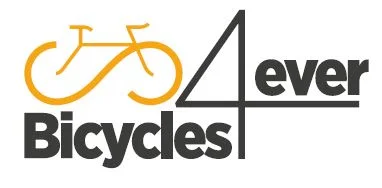Five Things to Consider for New Bike Day? (Bike Fitter Explains…) with Road Cycling Academy
Video Five Things to Consider for New Bike Day? (Bike Fitter Explains…) with Road Cycling Academy
Video Five Things to Consider for New Bike Day? (Bike Fitter Explains…) with Road Cycling Academy YouTube Channel.
Five Things to Consider for New Bike Day? (Bike Fitter Explains…)
Road Cycling Academy: Choosing the Perfect Bike for Your Riding Goals
Are you a road cycling enthusiast who is looking to upgrade their current bike? Maybe you’ve been riding for a year or two and have realized that your current bike just isn’t cutting it anymore. You’re not alone – many cyclists find themselves in this exact situation, unsure of what to look for in their next frame. In this article, we’ll explore some critical factors to consider when choosing your next road bike to ensure that it is fit for your specific riding needs.
Fit for Purpose: The Key to Choosing the Right Bike
The overarching ethos when selecting your next bike is ensuring that it is fit for purpose. Before making a purchase, it’s essential to ask yourself, “What am I going to do with this bike?” Are you looking for a versatile bike that can handle gravel rides on the weekends, or do you want a bike specifically designed for racing in local criteriums? Perhaps you need a commuter bike that can also tackle longer bunch rides on the weekends. By identifying your intended use for the bike, you can narrow down your options and choose a bike that aligns with your riding goals.
When it comes to road bikes, there are a variety of options to consider, including endurance bikes, crossover bikes, and race bikes. Each type of bike has its own set of strengths and limitations, such as compliance in the back end, rigidity, tire size, tire clearance, and adjustability of the cockpit. For endurance rides on rough chip seal roads, a bike with larger tire clearance and more compliance may be preferable. On the other hand, if you’re focused on speed and agility for racing, a race bike with a more aggressive geometry may be the better choice. It’s crucial to choose a bike that is tailored to your specific riding style and preferences to ensure a comfortable and enjoyable ride.
Geometry Matters: Finding the Right Fit for Your Frame
One of the most critical considerations when choosing a new bike is the geometry of the frame. The reach, stack, seat tube angle, and layback on the seat post all play a role in determining how comfortable and efficient your riding position will be. If you have the opportunity, it’s advisable to consult with a professional bike fitter to assess your current position and provide recommendations for the ideal geometry for your next bike. Alternatively, you can reference the geometry of your current bike and compare it to potential new frames to ensure a seamless transition.
When evaluating geometry, pay close attention to factors such as reach and stack dimensions, as well as the position of the seat post clamp. If you find that your current bike requires significant adjustments to achieve a comfortable fit, look for a frame with a geometry that better aligns with your needs. By taking the time to research and understand the implications of different geometries, you can make an informed decision when selecting your next road bike.
Crank Length: A Factor Often Overlooked
Crank length is a detail that many cyclists overlook when shopping for a new bike. The length of the cranks can have a significant impact on your comfort and performance while riding. If you have specific preferences or requirements regarding crank length, be sure to communicate this to the bike shop when making your purchase. Many local shops are willing to accommodate requests for alternative crank lengths at no additional cost, ensuring that you get the perfect fit for your individual needs.
Integrated Cockpit: Pros and Cons to Consider
Integrated cockpit designs have become increasingly popular in modern road bikes, offering a sleek and aerodynamic look. However, these integrated systems can limit adjustability and customization, making it challenging to fine-tune your riding position after the fact. Unless you are confident in your knowledge of your ideal cockpit setup, it’s advisable to opt for a non-integrated cockpit that allows for easy adjustments to stem length and bar width. By choosing a bike with a traditional cockpit design, you can ensure that you have the flexibility to make modifications as needed for optimal comfort and performance.
Bar Width: Tailoring Your Bike to Your Preferences
Bar width is another detail that can significantly impact your riding experience. If you have a preference for a specific bar width that differs from the standard option, don’t hesitate to communicate this to the bike shop. Many shops are willing to accommodate requests for custom bar widths, ensuring that you get a handlebar that suits your riding style and preferences. By choosing the right bar width for your needs, you can enhance comfort and control while out on the road.
In conclusion, selecting the perfect road bike involves considering a range of factors to ensure that it is fit for your specific riding goals and preferences. By focusing on aspects such as purpose, geometry, crank length, cockpit design, and bar width, you can make an informed decision that enhances your cycling experience. Remember that your next bike should not only look good but also feel great to ride, so take the time to research and test different options to find the perfect match for your needs. Happy riding!
The opinions expressed in this space are the sole responsibility of the YouTube Channel Road Cycling Academy and do not necessarily represent the views of Bicycles4ever Cycling Culture.

